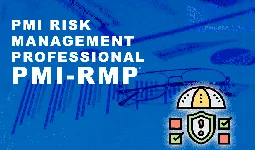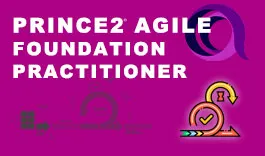DevOps Engineer Interview Questions - Best of 2024
-
 By Irfan Syed
By Irfan Syed - Published on Feb 6 2024

Table of Contents
Latest DevOps Engineer Interview Questions and Answers
DevOps is probably the most widely used term in technology today, despite the fact that it encompasses much more than buzz. It is a collaboration between the turn of events and task groups in which they work together to deliver an object more quickly and efficiently.
List of Top DevOps Engineer Interview Questions
Regardless, the job market is extremely competitive, and the questions posed during a DevOps engineer interview will cover a wide variety of research topics. If you've started planning for advancement and role employment in the IT industry, you're aware that it's a challenging area that requires genuine preparation to join.
Basic DevOps Engineer Interview Questions

1) Define what DevOps is.
It is a relatively new concept in the information technology field that refers to a type of training that emphasizes the organized effort and communication between programming engineers and the deployment(operations) community. It is focused on delivering programming items more quickly and lowering the rate of delivery failures.
2) Mention the primary viewpoints or guiding principles underlying DevOps.
The fundamental tenets or standards underlying DevOps are as follows:
• Framework as source code
• Consistent transmission
• Automation
• Observation
• Safety
3) What are the primary activities of DevOps in terms of application development and infrastructure?
The primary activities of DevOps are as follows:
• Advancement of applications
• Code development
• Inclusion of codes
• Testing of individual units
• Compilation
• Transmitting
• Structure
• Primis Player Substitute
• Procurement
• Style
• Organizing
• Transmitting
4) How is "Framework code" created and executed in AWS?
Within AWS,
• The framework's code will be written in a simple JSON format.
• This JSON code will be organised into files referred to as formats.
• These formats can be distributed via AWS devops and then monitored as stacks.
• Subsequently, the CloudFormation administration will perform the stack's development, erasure, and refresh operations.
5) What scripting language is particularly useful for a DevOps engineer?
A simpler scripting language is preferable for a DevOps engineer. Python is, by all accounts, widely used.
6) How is DevOps beneficial to designers?
DevOps can assist designers in quickly resolving bugs and implementing new highlights. Additionally, it facilitates more precise communication between colleagues.
7) Can you name a few common DevOps tools?
Several of the most common devices for DevOps are
• J. Jenkins
• Nginx
• Observe
• ELKS (Elasticsearch, Logstash, Kibana)
• Docker Inc.
• Appropriate
• Acquire
8) What types of HTTP requests are there?
The various types of HTTP requests are as follows:
• OBTAIN
• HEALTH
• INSERT
• POSTING
• Right
• Delete
• Adhere to
• Interaction
• Various alternatives
9) The components of DevOps are critical?
The primary segments of DevOps are as follows:
• Sustaining Integration
• Constant Testing
• Reliable Delivery
• Constant Monitoring
10) Indicate a few cloud platforms that are commonly used for DevOps implementation.
The most frequently used cloud registration stage for DevOps execution is:
• Google Cloud Platform
• AWS Web Services;
• Azure by Microsoft
11) Describe a couple of the benefits of using a version control system.
Colleagues can collaborate freely on any document at any time using the variant Control system. All previous forms and variations are securely stored inside the VCS.
A conveyed VCS, for example, enables you to store the entire history of the job, so that in the event of a failure in the primary worker, you can use your colleague's nearby Git vault. Permits you to determine which improvements have been made to the document's content.
12) Justify Git Bisect
Using double pursuit, Git divide assists you in locating the submit that contained a bug.
Experienced DevOps Engineer Interview Questions

13) What is the structure?
A type is a technique for assembling source code to determine if it compiles as a single entity. The source code will be gathered, investigated, tested, and organised during the form development process.
14) What exactly is Puppet?
Puppet is a beneficial venture for executives. It assists you in automating organisational tasks.
15) Explanation of two-factor authentication
Two-factor authentication is a security technique in which the client provides two distinct methods of identification based on discrete classifications.
16) Explanation of the expression 'Canary Release'.
A canary delivery is an illustration that mitigates the risk of introducing another adaptation programme into the development climate. It is completed by restricting access to it to a subset of the client. Prior to making it available to the entire client population.
17) How is PTR used in DNS?
The pointer record, abbreviated as (PTR), is used for switch DNS queries.
18) What exactly is a chef?
It is an amazing stage of robotization in which the foundation is converted to code. This device allows you to use compose contents to automate steps.
19) What are the prerequisites for DevOps execution?
The following are critical criteria for implementing DevOps:
• Correspondence between colleagues that is legitimate
• Automated testing
• Automation of the company
20) Indicate certain recommended protocols that must be followed in order to achieve DevOps success.
The following are widely known protocols for DevOps execution:
• The pace of conveyance refers to the time required for any endeavour to enter the production environment.
• Keep track of the amount of deformities discovered in various
• It is important to measure the actual or average time required to recover in the event of a disappointment in the development atmosphere.
21) Explanation of the SubGIt device
SubGit aides you in migrating from SVN to Git. Additionally, it enables you to build a writable Git mirror of a nearby or remote Subversion repository.
22) Mention a few major organization-wide auditing instruments.
Several of the most noticeable organization-checking instruments include the following:
• Sprout
• Icinga No. 2
• Wireshark &
• Nginx
• The OpenNMS
23) How will you know if your video card is capable of running Unity?
When you use a command
/usr/lib/Linux/unity support test-p /usr/lib/Linux/unity support test-p
It will include detailed information about Unity's requirements, and assuming they are met, your video card will be able to run solidarity.
24 How do I allow startup sound in Ubuntu?
1) To bolster the soundness of startups
2) Snap on the control panel and then on the Startup Applications.
3) Click Add to add a portion to the Startup Application Preferences window.
4) At that stage, populate the remark boxes with data such as Name, Command, and Comment.
/usr/container/canberra-gtk-play—id="work area login"—description="play login sound"
/usr/container/canberra-gtk-play—id="work area login"—description="play login sound"
5) Whenever you are done, logout and then re-login.
6) Alternatively, you can open it using the Ctrl+Alt+T shortcut key.
25) How can I open an Ubuntu terminal in a particular index the quickest way possible?
You may use the custom console alternative route to open an Ubuntu terminal in a particular catalogue. To do so, type genome – terminal – working – catalogue =/path/to/dir in the command field of another custom console.
26) How do you build launchers in Ubuntu's work area?
To create launchers on a work area in Ubuntu, press ALT+F2 and then type " dwarf work area thing alter – create new/work area," which will invoke the old graphical user interface and create a launcher on your work area.
27) What are the main features of Memcached?
Memcached's salient features include the following:
CAS Tokens: A CAS token is an identifier that is attached to an article retrieved from a reserve. This token can be used to save your refreshed piece.
Callbacks: It performs operations on the code.
getDelayed: It shortens the duration of your content's delay period, which is dependent on the outcome.
You may use a paired convention in place of ASCII with the more modern customer Igbinary: Previously, a customer would have to perform serialisation of the value with complex data, but with Memcached, you can use the igbinary option.
28) Justify the ability to split a single event of a Memcache into several tasks.
Indeed, it is possible to segment a single Memcache event into distinct activities. Memcache is a memory cache that can be run on several jobs.Additionally, you should plan for your customer to discuss a particular sequence of events.
Thus, you can run two distinct Memcache steps on the same host and they will both be completely secure. Unless you have partitioned the data, it becomes critical to know which case to retrieve or which case to put the data in.
29) If you have several Memcache employees and one of them fails, and it has your information, would it ever attempt to obtain critical information from that one bombed worker?
Although the details contained in the bombed worker will not be removed, there is an arrangement for auto-disappointment that you can customise for different hubs. Falling flat on one's face can be triggered by any attachment or Memcached worker level error, but not by normal customer errors such as inserting a current key, and so on.
Advanced DevOps Engineer Interview Questions

30) How are you going to restrict Memcached worker blackouts?
When one occasion fails, a few more follow suit, placing a greater burden on the information base worker when missing data is reloaded in response to a customer request. To avoid this, if your code was written to restrict reserve charges, it will have a negligible impact. Another option is to create a Memcached instance on another computer and use the missing machines. Internet protocol address
The code is another choice for limiting worker blackouts since it allows you to modify the Memcached worker list with trivial work. Setting break esteem is another choice that some Memcached customers use to prevent Memcached workers from going dark. When your Memcached worker is unavailable, the customer will continue to attempt to submit a solicitation until the maximum distance possible is reached.
31) How do you refresh Memcached when data changes?
When data changes, you can refresh Memcached by:
Proactively clearing the cache: clearing the reserve if an addition or upgrade is made.
Resetting the Cache: This is similar to the primary strategy, except that instead of erasing the keys and waiting for the subsequent solicitation for information to re-energize the reserve, you reset the qualities after the addition or upgrade.
32) What is the effect of the Dogpile? How can you avert this outcome?
The term "dogpile effect" refers to the situation in which a store closes and several locations are concurrently impacted by the customer's various solicitations. This effect can be avoided by implementing a semaphore lock. As value expires in this setting, the primary relationship obtains the lock and begins generating new value.
33) Justify why Memcached should not be included.
Memcached is often abused by using it as an information store rather than a reserve. Never use Memcached as the sole source of data for your application. Information should always be accessible through a secondary source.
Memcached is merely a key or value store and is incapable of resolving a dispute over the details or emphasising the substance in order to separate data. Memcached provides no level of protection, either in terms of encryption or validation.
34) What is the difference between Memcache and Memcached?
Memcache is an extension that enables you to work with convenient object-oriented (OOP) and procedural interfaces. It is intended to alleviate the strain of large data sets in custom web applications.
Memcached: This extension makes use of the libmemcached library to include an API for communicating with Memcached jobs. It is used to extend the capabilities of powerful web applications by alleviating the strain of large data sets. It is the most recent version of the API.
35) Demonstrate the Blue/Green Deployment Pattern.
The blue/green shading scheme is a nod to the primary issues identified during the programmed arrangement measure. You must ensure two indistinguishable creation climates while using the Blue/Green Deployment method. Regardless, only one of them is LIVE at any given point in time.
The LIVE environment is referred to as the Blue climate. When the community is ready for the subsequent arrival of their product, they conduct their final phase of testing in an environment known as Green climate. Once verified, traffic is redirected to the Green atmosphere.
36) Who are the proprietors?
Holders are a form of virtualization that is lightweight. They allow for the separation of steps. Posthumous gathering is used to determine what went wrong and what precautions should be taken to avoid future disappointments.
37) What is the simplest method for assembling a small cloud?
VMfres is one of the best options for quickly creating an IaaS cloud from Virtual Box VMs. In any case, if you need a lightweight PaaS, Dokku is a viable option, as slam content can be delivered via PaaS from Dokku holders.
38) What exactly is CBD?
CBD, or Component-Based Development, is a one-of-a-kind approach to item advancement. Engineers use this technique to continuously search for pre-defined, tried, and checked components to build and assemble into an object, rather than creating without any planning.
39) Explanation of Pair Programming in terms of DevOps
Pair programming is an Extreme Programming Rules engineering technique. Two developers collaborate on a common platform, on a similar plan/calculation/code in this approach. A single developer acts as a "driver." Other acts as a "eyewitness" who actively monitors the progress of an endeavour in order to identify problems. Jobs may be completed at any time without prior notification.
40) How is IaC accomplished by the use of AWS?
Begin by discussing the defined components of writing commands onto material documents and checking them in a different climate before arrangement, as well as how IaC is supplanting this approach. As with other administrations' scripts, IaC enables engineers to write, test, and maintain foundation elements in an enlightening manner, using organisations like JSON or YAML. This enables a more straightforward course of events and a more rapid arrangement of foundation changes.
41) Why Has DevOps Grown in Popularity Over the Last Few Years?
Prior to discussing DevOps' growing ubiquity, address the current state of the company. Consider some examples of how large players, such as Netflix and Facebook, are investing in DevOps to automate and accelerate application configuration, and how this has aided them in growing their businesses. Using Facebook as an example, you will discuss how Facebook's continuous arrangement and code proprietorship models have enabled it to scale up while maintaining the quality of engagement.
Numerous lines of code are executed without compromising the code's consistency, solidity, or security. Netflix should be the next use case. This company for live and on-demand video follows comparable practises, including fully automated cycles and frameworks. Take note of these two associations' clientele: Facebook has over 2 billion users, while Netflix has over 100 million users worldwide.
These are excellent examples of how DevOps can assist organisations in ensuring higher release success rates, decreasing the lead time between bug fixes, automating and streamlining delivery, and generally lowering labour costs.
42) What are the DevOps stages?
DevOps is typically divided into six stages. Its phases follow a predetermined pattern. In either case, no stage is separated by boundaries, and no stage begins unless the previous one has concluded fully. At the moment, we should consider the DevOps cycle stage in greater detail.
1) Organizing
The primary phase of the DevOps lifecycle is planning and growth. This stage entails properly comprehending the mission in order for its participants to achieve a specific work objective. This also accounts for the various stages of development and activities. Additionally, it is critical that partnerships are prepared on apparatuses and measurements to ensure the task's administration is as clear as possible.
2) Enhancement
At this point, the task is completed by preparing the foundation, writing codes, characterizing tests, or automating the process. At this point, proof is critical. Engineers store codes in code supervisor while supervising applications, activities involving knowledge, which enables seeing, creating, and significantly more.
3) Perpetual Integration
This stage automates the approval and monitoring processes. This has a unique component that ensures the development environment is properly set and then distributed in a manner that integrates it with the remaining applications.
4) Automated Deployment
DevOps drives the computerization of organizations through devices and material with the overarching goal of resolving the entire duration of an element's enactment. The primary focus of this stage is the appearance of the cloud as a code that enables the board to transition from a restricted system to a long-term cost improvement.
5) Extracurricular activities
Generally, all DevOps operations occur continuously during the lifetime of programming, as the system undergoes significant change. This stage establishes flexibility, usability, and adaptability.
6) Verification
This stage is a long-term component of the DevOps lifecycle. DevOps monitors and dissects data that indicates the application's current state.
43) Why has DevOps gained popularity in recent years?
DevOps is in high demand in today's market, and multiple companies are scrambling to invest in DevOps capability. A portion of the world's largest companies, for example, Facebook and Netflix, are investing money and resources in DevOps to automate and accelerate application delivery, as each enormous industry will require some level of computerization in the coming years.
It assists associations in growing and expanding their organizations in order to generate enormous revenues. Its notoriety continues to grow in demand as tech competition intensifies and more companies embrace DevOps practices; at that stage, it becomes significantly more imperative for rivals to invest capital in comparable or superior advancement endeavors, thus increasing demand. With its latest innovation standards, DevOps execution has shown tangible results in companies battling for increased productivity; engineering laborer’s can execute codes faster and with fewer errors than at any point in recent memory.
As of now, more clients and companies rely on cloud programming because it allows fast arrangements to meet consumer needs without interfering with administrations; this fosters long-term client acceptance of cloud programming such as DevOps.
44) What is the distinction between Ansible and Puppet?
Today's DevOps specialists are tasked with supervising and controlling a massive number of personnel, which necessitates impressive advancements in processing as well as new innovation, for example, virtualization and distributed computing. As a result, Puppet and Ansible are the tools used to manage a large number of jobs.
Additionally, referred to as Remote Execution and Configuration Management apparatuses, these enable the administrator to perform or execute commands on a large number of staff concurrently. Its primary objective is to maintain and organize thousands of employees at any given time. Apart from that, Ansible and Puppet are markedly different from one another and can be distinguished by a variety of instruments, as illustrated below:
1) Class
2) Ansible
3) Puppet
4) Versatility
To learn about DevOps tools, DevOps methodologies and latest DevOps skills for better business, you can take up the DevOps Certification Training offered by Sprintzeal and earn a certification that’ll enhance your career.
To get full details about the DevOps certification training in the online, classroom and live virtual mode of study, reach us at Click Here or chat with course expert to get instant help.
Subscribe to our Newsletters
Popular Programs
PSM® - Professional Scrum Master Certification
Live Virtual Training
- 4.8 (75 + Ratings)
- 62k + Learners
Trending Posts
Agile Scrum Methodology - Benefits, Framework and Activities Explained
Last updated on Mar 25 2024
Stakeholder Engagement Levels Guide
Last updated on Sep 16 2024
Agile Manifesto - Principles, Values and Benefits
Last updated on Dec 9 2022
Top Scrum Master Responsibilities 2024 (Updated)
Last updated on Jan 15 2024
Why Should You Consider Getting a Scrum Master Certification?
Last updated on Feb 13 2024
Product Owner Certifications List
Last updated on May 22 2023
Categories
- Agile Management 54
- AI and Machine Learning 42
- Big Data 53
- Business Management 50
- Cloud Computing 44
- Digital Marketing 55
- Information Security 7
- IT Hardware and Networking 16
- IT Security 103
- IT Service Management 29
- Leadership and Management 1
- Microsoft Program 2
- Other 40
- Programming Language 31
- Project Management 162
- Quality Management 74
- Risk Management 8
- Workplace Skill Building 2
Trending Now
List Of Traits An Effective Agile Scrum Master Must Possess
ArticleDevOps Vs Agile Differences Explained
ArticleDevops Tools Usage, and Benefits of Development Operations & VSTS
ArticleAgile Scrum Methodology - Benefits, Framework and Activities Explained
ArticleGuide to Agile Project Management 2024
Article10 best practices for effective DevOps in 2024
ArticleGuide to Becoming a Certified Scrum Master in 2024
ArticleWhy Should You Consider Getting a Scrum Master Certification?
ArticleCSM vs CSPO: Which Certification is Right for You?
ArticleAgile Manifesto - Principles, Values and Benefits
ArticleAgile Methodology Explained in Detail
ArticleAgile Project Management Explained
ArticleEssential Tools for Agile Project Management 2024
ArticleEverything about Scrum Methodology
ArticleScrum Workflow - A Step by Step Guide
ArticleLatest Agile Interview Questions and Answers To Look For In 2024
ArticleScrum Interview Questions and Answers 2024
ArticleTop Scrum Master Responsibilities 2024 (Updated)
ArticleProduct Life Cycle in Marketing: Essential Strategies for Product’s Success
ArticleDevOps Engineer - Career path, Job scope, and Certifications
ArticleBusiness Agility Guide - Importance, Benefits and Tips
ArticleScrum vs Safe – Differences Explained
ArticleCSM vs. PSM - Which Scrum Certification is Better?
ArticleSAFe Implementation Roadmap Guide
ArticleAgile Release Plan Guide
ArticleAgile Environment Guide
ArticleAgile Coaching Guide - Best Skills for Agile Coaches
ArticleAgile Principles Guide
ArticleSAFe Certifications List - Best of 2024
ArticleAgile Prioritization Techniques Explained
ArticleScrum Ceremonies Guide
ArticleProduct Owner Certifications List
ArticleScrum of Scrums Guide
ArticleWhat is DevSecOps and its Importance
ArticleData Processing - A Beginner's Guide
ArticleDevOps Career Guide 2024
ArticleStakeholder Engagement Levels Guide
ArticleScrum Master Career Path Explained
ArticleScrum Career Path Explained
ArticleTop Git Interview Questions and Answers [Updated 2024]
ArticleA guide to Agility in cloud computing
ebookProduct Roadmap: An Ultimate Guide to Successful Planning and Implementation
ArticleDMAIC Methodology - The Ultimate Guide
ArticleProduct Life Cycle Strategies: Key to Maximizing Product Efficiency
ArticleScrum Master Salary Trends in 2024
ArticleProduct Life Cycle Model: A Guide to Understanding Your Product's Success
ArticleWhat is a Product Owner - Role, Objectives and Importance Explained
ArticleSuccessful Product Strategies for Introduction Stage of Product Life Cycle
ArticleUnlocking Career Opportunities in Product Management: Your Roadmap to Success
ArticleSaturation Stage of Product Life Cycle: Complete Guide
ArticleCutting-Edge Technology of Google Cloud
ArticleHow to Write an Executive Summary for a Business Plan?
ArticleImportance of Procurement Management Software in Modern Business
Article
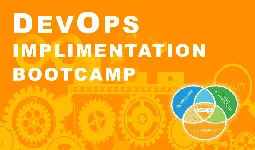

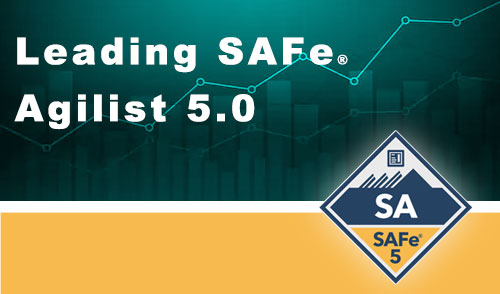
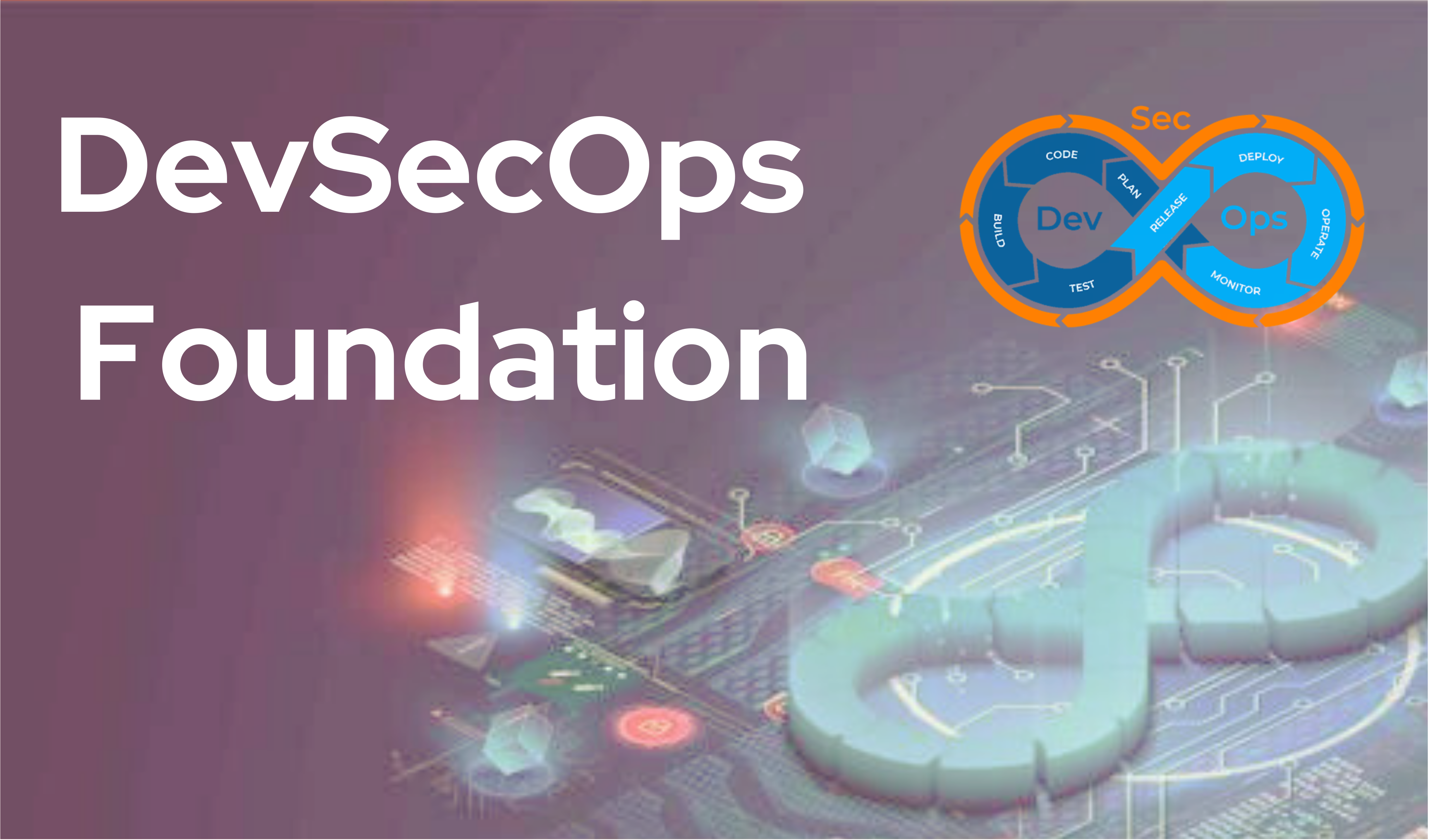

.webp)

